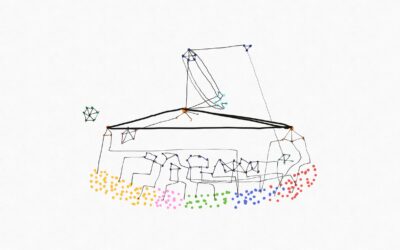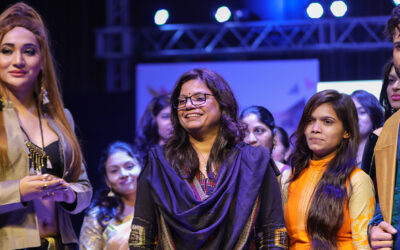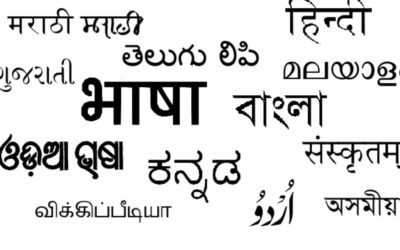A facilitator in college in one of my earliest classes in my first year asked us,
“How was your morning today? Draw it and show me”.

This was a morning like that. A morning when you’ve woken up but not quite. On a morning like this there isn’t much to look forward to except maybe one’s chai. With a cup of tea in front of me as I sit down and a packet of rusks next to that. And ohh how can I forget. The butter right next to those. A combination that is synonymous with mornings for me. A combination that reminds me of home something that is a staple at our breakfast table. Chai, rusk and butter.
I slather the butter on my rusk generously and I dip my rusk in my hot hot chai. Pull my hand out and my rusk is almost falling apart and the butter on it is melting. I put the rusk in my mouth and mghmhmm. How can I try to explain what that felt like? But let me give it a shot.
There are very few things that taste as complete as a bite out of a butter-rusk dunked in hot chai. The rusk is a mix of crunchy and mushy and the butter on it transitioning from frozen to molten. The contrast between the hot chai and the cold butter as well as the sweet rusk and the salty butter. As delightful as that bite was, there was something missing. Just as I thought of this question, I recalled the answer. And my following rusk once slathered with butter and dunked in hot chai, I proceeded to flip the rusk over, with the butter facing down as I bit into it.
This is exactly what I was missing.

Turning the rusk around makes the buttered side face your tongue. It helps you taste the butter really well and you then need less butter for the bite to taste just as buttery. It was when I took this bite that I started thinking … when was it that I learned this? And how is it that we learn things?
Also read: Is Gandhi’s Nai Talim Relevant Today?
There are many different ways that we learn things. And just as many ways in which someone tries to make us learn something. From parents teaching us about proper manners and etiquette to teachers in school who are trying to convey the Pythagorean Theorem. Thinking of the vast spectrum of things that we learn and in the ways that we learn it becomes important for us to give a second thought to learning.
What is learning? When working in the field of education the question becomes what do we want learning to mean for our students?
Learning is a process that we are in every moment of our lives. There are multiple ways to define and understand learning. Growing up I had multiple definitions myself, ‘the process of finding something out’ is one of the first of them. I didn’t know that the Salt March happened in 1930, then someone told me about it. I learned it. ‘Identifying patterns of actions to reach a goal’ was another, such as when I learnt to use an ATM machine. ‘Building familiarity, efficiency and competence with a skill or system’ such as when I learned how to play cricket or a video editing software.
If we keep adding more sentences to the paragraph above thinking back to all the ways we would naturally use the word ‘learning’ we will find that all of them make sense and feel complete. However at the same time layering these definitions on top of each other we find that what ‘learning’ is becomes unclear and presents its very complex nature. Making it seem like it is not a target to hit but rather a direction to move towards.
Looking up online about the same will take one in multiple directions. From the Ivan Pavlov’s experiments about conditioning to learning with the head, hand and heart as spoken about by Mahatma Gandhi. Some definitions of learning that point towards its complex nature are here:
- “A change in human disposition or capability that persists over a period of time and is not simply ascribable to processes of growth.” — From The Conditions of Learning, by Robert Gagne
- “Learning is a relatively lasting change in behaviour that is the result of experience. It is the acquisition of information, knowledge, and skills.”
- “Learning is a process that leads to change, which occurs as a result of experience and increases the potential for improved performance and future learning” — Ambrose et al, 2010
So where does one put butter on a piece of toast? Is it on the top? At the bottom? On the sides?
Rather the question becomes how does one design learning experiences more holistic in nature? Learning experiences that cater to more than one definition of learning. Experiences that are lasting, sensorial and more fun?
Designing a learning experience can be as complex as our definitions of learning with multiple learning outcomes and objectives. Children often need to be introduced to concepts, phenomena and perspectives that are new to them. They need to build clarity, understanding and comfort with them. With the numerous resource limitations, time limitations and the hundred different challenges that can come up when you put fifty children and a facilitator in (or outside) a room. It is in this complex intellectual, emotional and logistical nature of learning that frameworks and models come in handy to help us understand the nature of learning as well as how to structure a learning experience.
Kolb’s Experiential Learning Theory
David Kolb is an American psychologist and educationist, he published his experiential learning theory in 1984. Kolb understood,
Learning as the process whereby knowledge is created through the transformation of experience.
His approach is based around two fundamental beliefs. The first that learning is an experiential process and the second that there exist 4 different learning styles and that an individual has a preferred style. Kolb’s work was influenced by John Dewey, among others. He is a pioneer in the field of education and is regarded for some of the earlier experiments with work and education. Kolb’s model speaks of how experiences transform into effective learning and he sees this process as a cycle with four stages.
Concrete Experience – when a learner has a new experience or a previous experience is presented and interpreted in a new context. This lays the foundation for what is an experiential approach to learning. The concrete experience of the learner informs their journey through the learning cycle.
Reflective Observation – the learner reflects on their new experience to understand what happened and what it means. Reflection is crucial as it gives us time and space to internalise the experience that we just had. It is necessary for one to be able to build upon their experience.
Abstract Conceptualisation – the learner adapts their thinking and builds new ideas based on their experience and reflection. Allowing them to go beyond their initial experience and discover more about what they have encountered.
Active Experimentation – the learner applies their new ideas. They understand what works, what doesn’t and see if any changes are to be made. Strengthening their understanding of the experience and setting them up for the cycle to repeat for another round.
David Kolb along with the stages of the learning cycle spoke about individual preferences of learners. Learners can enter the learning cycle at any point in time and our patterns in these preferences divide us into four types determined by our dominant learning style. The experiential learning theory gives us necessary structure and clarity about the fundamental steps of learning. However the way it often translates on ground is not in neat quadrants and blocks of time or activity. We see parts of the cycle transition smoothly from one to the other and often take place simultaneously.
The role of a facilitator and the sessions design may not be to have their session go through these four phases of the learning cycle but to create room flexibility that allow learners to do that. That allows learners to choose where they would like to enter the cycle, choose how they would like to engage but at the same time ensure that they push themselves to go through all of its parts.
A Well Designed Session
A well designed session creates room for effective learning to happen. However, there is more to the creation of a potent learning environment than that. While the following are not part of a framework and nor would I call it an exhaustive or encompassing list by any means. They are a few key elements that have been identified by me and my team. These are elements that we try to incorporate and move towards as we conduct more and more sessions and interact with more and more learners.
Freedom – in what one does as well as how they choose to approach it. A lot of the sessions that we design tend to be around challenges. As students are confronted with a challenge, their exploration of it is kept free. They are given the space to experiment, fail and succeed at their pace.
Purpose – The purpose of any activity and module is something that we try to be clear about. Not just from our perspective of looking at the session through its activities as well as a part of the larger curricular activity. But also from the lens of the student. Why would he or she want to do this? What will they be trying to achieve? What is the goal that is in front of them?
Initiation – throughout our session the ball is often in the court of the students. Their actions guide them. When any challenge comes forth the children are asked to start thinking and doing what they feel is right before they are helped to reach their goal.
Enjoyment – there is something unexplainable that is added to a learning experience with enjoyment of the participants. These involve both the learners and the facilitators. This can be seen through a desire to engage, an openness to new ideas and a sense of faith that both the facilitator and the student place in each other. And simply put, if anything can be enjoyable, why shouldn’t it be so.
Mahaul (माहौल) – The factors mentioned above add and help create what is the mahaul of any space. In our conversations among the team we find it comes up multiple times and there is an understanding of a certain mahaul that a learning space should have. For it to be energetic, happy, open, free and many more things. Something that seems either weird or too obvious to be a part of this list. The mahaul of any learning space is created by the facilitators, students, parents as well as multiple hygiene and external factors.

These last 10 months have had me explore this world of learning more than I have ever had the opportunity to. It has allowed me to enter the world of children. It has helped me realise the responsibilities and importance of a teacher and has given me a confidence interacting with kids that I had never had before. And as I try to understand learning a little better I find that one should be able to create similar spaces of learning, experimenting and growing for themselves just as they do for who their students are.
Learning starts to become not a target but a direction to move towards; a constant to accept and enable; the first step to anything new and the energy that keeps alive anything that has existed before.




0 Comments